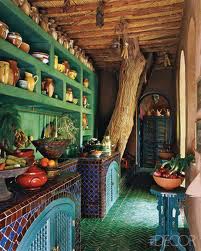Odors fill
and rouse the nose. A swarm of Mediterranean herbs hover over the browning of a
meat. The heavy smell
of baking coats the back of the throat. The flavorful aromas cause your taste buds to salivate and remember evenings in a restaurant with a glass of wine. Then the sense of hearing reacts. There is a sizzle like the strumming of a guitar over the rapid
drumbeat of roiling water as the thumping punctuations of a knife on a cutting
board dance with a whirring blender.
Next, the sense of touch awakens as the cheeks feel warmth from the
oven and moisture from the stovetop.
Finally sight catches up to the others.
The door
opens onto a kitchen. It is the
place most of us prefer to be. Most other rooms are for leisure or distraction, but the kitchen is the center of activity in the house with a
sense of purpose and fulfillment. In the kitchen we discover.
We laugh in the kitchen and feel safe. We grow drunk in the kitchen. We talk loudly over the sound of the work. The meal is often a satisfying end, a
celebration, of what was accomplished in the kitchen.
What were we doing all
those centuries ago when as we huddled around the fire? Keeping warm, pushing back the darkness, and cooking. The fire light is still with us in tradition, in metaphor, in religion, in fond memories for those who have cooked over fire or watched a meal sizzle over an open flame. As we roamed the fields
and learned the ways of the animals about us we examined the world in order to eat it. When we boil a liquid to separate it into it’s parts only to reconstitute those elements in another chamber through condensation we are experimenting in the kitchen, learning science, and distilling.
In the kitchen the fruits, the grains, the meats, the tools of the world come together.
This kitchen just now entered from the Victorian Cabinet of Curiosities that was in turn
connected to the Museum that we first entered on a bright and sunny
fall day in order to escape the crisp cold morning and spend a few hours learning something of
interest, differs from other kitchens, in that this kitchen has been here for generations (thousands of years). It began as a campfire. At some point it acquired walls though
still separate from the home. It consisted of separate rooms for storage of dry goods and storage of meats. It
acquired an oven, then a sink, drainage, cold storages, a stove top, blenders,
and today it even might have a dehydrator. This kitchen has seen fish from the North Atlantic, peppers
from South America, champignons from a hillside in Alsace, roast duck, roast beef, roasted
potatoes, fermented cabbage from both
Korea and Poland. In short, the
kitchen travels the world, or better yet, we travel the world through the
Kitchen. We start with basic fire,
we learn the ways of harvesting, we sharpen our knives, we import and trade, we
sautee, we toss, we bake, and all in order to eat. Here, we cook and eat.
The Kitchen is a wonder to
behold. It is a place of
Wonders. The kitchen is a Cabinet
of Wonders in and of itself residing in every home, under your nose, as it is
said.
Before we continue on our
journey, through that other door on the far wall, the large wooden one with an
iron handle in the shape of a butcher’s knife, rest a bit, take a seat at the
cutting board, have a wedge of Camembert, a sip of Trollinger wine, a warm
slice of bread, a grape or two.
Relish the Kitchen.





No comments:
Post a Comment